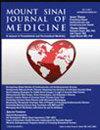Use of in vivo real-time optical imaging for esophageal neoplasia.
引用次数: 4
Abstract
Esophageal adenocarcinoma carries a poor prognosis, as it typically presents at a late stage. Thus, a major research priority is the development of novel diagnostic-imaging strategies that can detect neoplastic lesions earlier and more accurately than current techniques. Advances in optical imaging allow clinicians to obtain real-time histopathologic information with instant visualization of cellular architecture and the potential to identify neoplastic tissue. The various endoscopic imaging modalities for esophageal neoplasia can be grouped into 2 major categories: (1) wide-field imaging, a comparatively lower-resolution view for imaging larger surface areas, and (2) high-resolution imaging, which allows individual cells to be visualized. This review will provide an overview of the various forms of real-time optical imaging in the diagnosis and management of Barrett's esophagus and esophageal adenocarcinoma.食管肿瘤的活体实时光学成像应用。
食管腺癌预后较差,因为它通常在晚期出现。因此,一个主要的研究重点是开发新的诊断成像策略,可以比现有技术更早、更准确地检测肿瘤病变。光学成像技术的进步使临床医生能够通过细胞结构的即时可视化获得实时组织病理学信息,并有可能识别肿瘤组织。食管肿瘤的各种内镜成像方式可分为两大类:(1)宽视场成像,相对较低分辨率的视图,可成像较大的表面区域;(2)高分辨率成像,可显示单个细胞。这篇综述将提供各种形式的实时光学成像在巴雷特食管和食管腺癌的诊断和治疗的概述。
本文章由计算机程序翻译,如有差异,请以英文原文为准。
求助全文
约1分钟内获得全文
求助全文

 求助内容:
求助内容: 应助结果提醒方式:
应助结果提醒方式:


